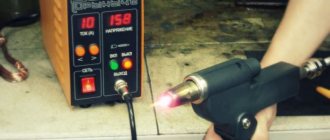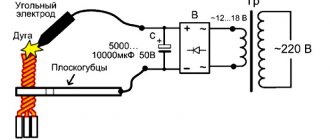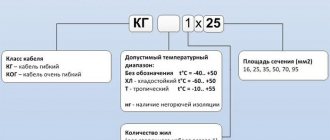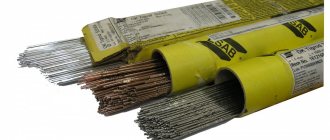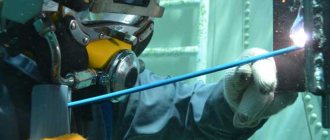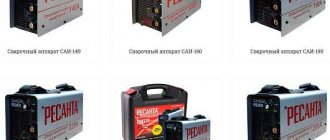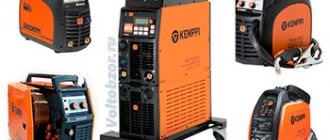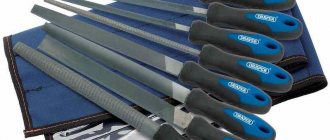11/13/2019 Author: VT-METALL
Issues discussed in the material:
- What is a welding machine
- What is included in the kit of various types of welding equipment
- What types of welding equipment are there?
Welding began to be actively used in the production of metal products about a century ago. Nowadays, neither electronics companies nor representatives of the construction industry can do without it. You need to understand that work is carried out with a variety of metals, therefore, so that the reliability of welding seams does not depend on the material of the product, various types of equipment have been created. As practice has shown, welding machines have become the most popular among them. Next, we will consider the types of welding equipment, as well as their advantages and disadvantages.
What is a welding machine
Let's start with the fact that all machines used for welding include a certain unified set of components.
The role of the basis is played by the power source, that is, a transformer, rectifier or inverter. It converts the mains current into welding current, giving it the necessary current-voltage characteristics. The power source is located in a metal grounded case, which sometimes has handles for carrying or fastenings for shoulder straps. The most massive installations have wheels.
On the back of the housing there are plug connectors or wires that allow you to connect the welding equipment to an electrical source. The front panel usually has a power switch, a current regulator, and positive and negative polarity plug connectors.
Two cables go to the power source from this type of welding equipment. At the end of one of them there is a grounding terminal (usually an alligator clip), which hooks onto the workpiece and has a positive charge. The second cable can be with an electrode holder or a torch - it all depends on the type of welding equipment used.
Sometimes the device is equipped with a built-in wire feeder, as well as water or air cooling mechanisms. Or the feeding device can be displayed on the outer surface of the housing and also be autonomous.
Known semi-automatic models
So what types of semi-automatic welding machines have become the most popular on the market? They are presented in a fairly wide range.
The following types of semi-automatic welding machines are considered worthy of attention:
- "Cyclone" PDG-240 DAV from a domestic manufacturer. It is equipped with several modes, has a protective function against overheating and a high current value for welding of 240 A. The unit is suitable for body work and welding metal structures made of steel. Repairable and has a good level of performance.
- "Resanta" SAI PA 165. The device is included in the budget group. It is light in weight, has optimal dimensions, and is resistant to voltage fluctuations. It has a cooling system and IGBT class electronic filling.
- "Energomash" SA-97PA20. Professionals loved this device for its reliability. It is suitable for both domestic use and large workshops. The model operates on wire welding with and without gas supply. It consumes energy economically and has a number of auxiliary functions.
- If you are looking for a unit for the MIG-MAG method, then you should pay attention to the German model Fubag TSMIG 180. Suitable for working with shielding gas, as well as with flux-cored wire. Overheating of the device is impossible thanks to the built-in cooling system. The maximum current rating is 145 A. The device will be an excellent choice for those who weld in the garage or in country houses. Welds low-carbon and low-alloy metals, as well as stainless steel. The kit includes a protective mask, gas hoses, two contact tips, a spool of welding wire, and a special torch for MIG-MAG work.
What is included in the kit of various types of welding equipment
This kit consists of:
- Transformer or inverter equipment for welding work. It allows you to adjust the characteristics of the supply circuit to the welding requirements. The operating principles of this element may be different and depend on the specific model.
- A generator, that is, a direct current or high frequency unit.
- Welding rectifier necessary to obtain direct current from alternating current.
- Automatic arc welding machine, that is, equipment that performs welding work.
- Other automatic welding machines, because you need to understand that in such devices only the wire feed is mechanized. The welder must move the torch himself.
Welding using a TIG machine
DC welding machines, the types of which are described in this article, are also represented by TIG devices. Devices of this type weld metal with an increased level of connection. They are indispensable when joining particularly difficult seams.
In addition to reliability, the devices are also distinguished by their aesthetics. When welding with TIG machines, electrodes made of graphite or tungsten are used. The device operates on the following principle: inert gas passes through the supply hoses to the burner, and electricity flows from the AC/DC electrical unit. The electrode is installed in the burner. Cylinders can be filled with helium, nitrogen and their mixture.
Usually, when welding with a non-consumable electrode, there is no droplet transfer into the weld pool. Therefore, additional consumables are used: special wire additives or tapes. Additives have different chemical compositions. This allows you to change the properties of the weld.
At a constant current, cast iron and various steels are boiled. Alternating current is used when welding parts made of non-ferrous metals.
Tig welding is complex. It requires the master to have sufficient experience and knowledge. It is not recommended for beginners to use TIG devices, despite the fact that the device is configured automatically and has unified functions.
It is recommended to start with an ordinary inverter. This will allow you to learn how to hold an arc and weld metal.
The TIG welding machine is used in many applications when working with cast iron, steel and non-ferrous metals. The relatively low level of productivity of these units is compensated by high-quality seams and minor metal losses.
Spot welding equipment works on the following principle: current welds metal under pressure. The electric arc promotes the formation of a local melt of the metal of both workpieces. When the short exposure to the arc ends, the mite pressure increases. As a result, the metal crystallizes and connects the products to each other. In most cases, spot welding is used to work with sheet material.
To secure sheets of a large area in the center, use a single-sided gun. When it operates, two welded point joints are obtained, which are located next to each other.
For spotters there is a wide range of studs, loops, welding hooks, rivets, etc.
Basic parameters of welding equipment
The key indicator for any type of welding equipment is the on-time (ON) at various current values. Different manufacturing companies use their own approaches to measure this value. According to the European standard EN 60974-1, its calculation is based on the duration of operation at +40 °C before stopping due to overheating of the device. To calculate the duty cycle, the ratio of this time to a work cycle of 10 minutes is estimated.
The Italian technique is based on more realistic conditions (t = +20 °C, work intermittently). To obtain PT, it is important to imagine the number of electrodes that you can work with in a given period of time. Of course, with such a calculation, a higher figure is obtained, which means that before purchasing a device it is necessary to clarify exactly how the calculation was carried out. However, in practice, technicians rarely burn several electrodes at once at full power without taking a break. That is, a device with a “European” PV of 10–20% will work before shutting down for the same amount of time as with the 60–80% set by the Italian manufacturer.
We recommend articles on metalworking
- Steel grades: classification and interpretation
- Aluminum grades and areas of their application
- Defects in metal products: causes and search methods
However, the first thing that professionals evaluate in equipment is the range of changes in the welding current. This value indirectly indicates the power of the selected type of equipment. The higher it is, the larger the diameter can be chosen for the electrode, and the higher the PV will be when working with thin electrodes, but at the same current strength. To use a transformer in everyday life, they usually take a 3 mm electrode, setting the power to 150 A. If we talk about inverters, then they need an even lower indicator, but even with this they do an excellent job with the “four”.
On the box with electrodes you can find the required current power for working with transformers and rectifiers. You need to understand that at such values the inverter begins to cut metal.
Unit operating parameters
Having decided on the type of equipment needed, you need to select a model with the necessary technical characteristics. There are several of them, and they all affect the quality and practicality of using the equipment.
Optimal mains voltage
In this regard, there is not much choice: one or three phases . The voltage of 220 volts is more common in everyday life, so you need to choose the appropriate device. True, there are universal models, for example, Linear 220, which support both types of power.
It should be noted that such equipment does not respond well to changes in the electrical network, so protection against voltage surges is a necessary element in the inverter circuit diagram. This allows them to be used in areas with unstable power supply. As a rule, the range of a suitable mode expands by 10–20 percent from the standard. This is 165-270 volts, but there are samples (EWM Pico 162) in which this parameter is 132-253 volts.
Idle speed Uх. X. and NXX
This parameter determines the ability of the device to start and re-ignite the electric arc and support its combustion. As a rule, these figures are approximately 2 times greater than the constant ignition characteristics. For alternating current devices according to GOST this is 80 volts, for rectifiers - 90 volts.
However, modern models provide starting at minimum current values. It is generally accepted that the higher the idle speed, the better. The Hitachi W200 TIG/MMA inverter operates with a similar rating of 65 amperes, which is a very good result.
Types of welding equipment
1. Transformers.
The transformer is considered the most traditional type of electric welding equipment, having almost the simplest design. The main component of this type of welder is a step-down transformer. It converts the mains voltage to the value required for welding. Various approaches can be used to change the current strength, the most famous of which is to change the distance from one winding to the second.
Transformers stand out from other types of welding equipment due to their ability to produce alternating current output. This feature causes the metal to splatter heavily and reduces the quality of the seam. If you want to work with non-ferrous metals and improve the quality of arc combustion, then the device will have to be supplemented with heavy and bulky components. Note that the transformer itself is also bulky and weighs a lot. To use it for serious work, the welder needs a lot of experience, and special electrodes designed for alternating current are also required.
This device boasts a high efficiency of 90%, but you need to understand that a certain proportion of energy is spent on heating. Fans of different powers can cool a system weighing several tens or even hundreds of kilograms. Today, this type of welding machine is used less frequently, but it does not go out of use due to its affordable price, reliability and long service life. Transformers are used when working with low-alloy steels.
2. Rectifiers.
In principle, this is an improved version of transformer devices. The welds obtained with their help are practically free of defects that usually appear when working with alternating current. In addition to the step-down transformer, the design of this equipment includes a diode block - this is the rectifier itself, as well as control, starting and protection elements. In this case, alternating current changes voltage and is converted to direct current. Thus, the arc is smooth and stable, due to which the proportion of splashed metal is reduced, and a better quality seam is obtained. Rectifiers allow you to use any electrodes.
In addition, such equipment is suitable for processing low-alloy ferrous steels, non-ferrous metals, stainless steel, and cast iron. However, there must be appropriate electrodes for each type of metal.
Direct current has polarity, which should not be forgotten when connecting the electrodes. The fact is that for some welding work, for example, aluminum welding, reverse polarity is used.
Many companies are gradually reducing the share of production of such equipment. However, professionals are still actively working with rectifiers.
Among the disadvantages of this type of welding equipment, it is worth mentioning its considerable weight and a serious “dip” of voltage in the electrical network during operation. In addition, only an experienced welder can work with such a device. But straighteners are distinguished by their low price, reliability and ability to provide good seam quality.
3. Semi-automatic devices.
A similar technique for welding in an environment of inert or active gases is more complex than the two previous types, but it is also more convenient. It is actively used during car body repairs and in everyday life.
Its design includes the following elements:
- transformer;
- rectifier;
- wire feed drive;
- gas cylinder;
- sleeve with burner.
For welding, a wire melting in an electric arc is used, which is located in a protective gas environment during operation. The current is usually adjusted in steps, and the wire feed speed can also be varied. The ratio of these parameters for welding equipment is selected depending on the required type of welding.
There are different types of semi-automatic machines that work:
- with gas;
- with and without gas (with switching function);
- without gas.
To operate without shielding gas, a special flux-cored wire is required. It differs in its composition: in addition to metal, it contains flux. The combustion of the latter forms a cloud of protective gas, which prevents the start of the oxidation reaction by air in the weld pool. Thanks to flux, the metal is given the necessary parameters, and a more stable arc is formed. It is important that this method of operation allows you to refuse to use a gas cylinder, which is convenient. However, the price of such wire is significantly higher than that of its analogues without flux in the composition.
For processing different metals, the appropriate gases are selected: carbon dioxide allows welding of iron, a mixture of argon and carbon dioxide is suitable for steel, welding of aluminum occurs in an argon environment. In this case, industrial or branded gas cylinders are used.
Semi-automatic machines have good performance and allow you to obtain very high-quality seams. Among the disadvantages of such equipment are the spattering of metal and the high consumption of materials for waste.
4. Inverters.
This type of device is called pulsed devices. Today, this type of equipment is used most often by welders because it is light in weight and is also publicly available. Just 10 years ago, inverters were expensive and could not boast of high reliability, while today we have managed to get rid of these disadvantages. The inverter technique makes it possible to reduce the size of the transformer, improve the quality of the arc, increase efficiency, and reduce the proportion of spattered metal.
The design of the welding inverter includes a power transformer necessary to reduce the mains voltage to the required value, a block of electrical circuits and a choke-stabilizer to minimize current ripple.
The supply voltage is supplied to the rectifier in the inverter, then the circuit block converts direct current into alternating current at high frequency. Alternating current is supplied to a high-frequency welding transformer, which is lighter and more compact than a mains converter. The voltage at the output of the welding transformer is rectified once again and supplied to the arc.
5. Argon arc welding machine.
When working with this type of equipment, special non-consumable tungsten electrodes are used, while the role of a protective gas is played by helium or argon.
Equipment equipped with a tungsten electrode consists of:
- a source providing direct or alternating welding current;
- devices for adjusting work with current;
- a set of burners designed for different voltages;
- a control circuit responsible for coordinating the welding cycle and protection;
- stabilizing device for excitation, alignment of the arc.
This type of equipment is used for high-quality welding of non-ferrous metals.
6. Spot welding machine.
Spot welding refers to contact types of thermomechanical class welding. The work process includes several stages. First of all, the workpieces, folded in the required manner, are placed between the electrodes and compressed together, then they are heated so that they acquire plasticity, and then they are deformed. The equipment used in factories allows us to achieve welding speeds of up to 10 points per second.
The parts are heated by an instantaneous (0.01–0.1 sec.) current pulse. In this way, it is possible to achieve the melting temperature, that is, the appearance of a liquid zone between the parts being connected. After the current stops, the parts remain compressed together until hardening occurs. Note that compression stops with a time delay, because in this way it is possible to achieve better crystallization of the metal.
Among the advantages of this technology are the cost-effectiveness, reliability and strength of the seam, and the ability to easily automate the process. However, the scope of use of spot welding is limited by the fact that the resulting seam is not airtight.
Advantages and disadvantages
When buying a welding inverter, you need to consider their advantages and disadvantages . The advantages include:
- Relatively low weight of the device.
- Cost-effective due to high efficiency (up to 90 percent).
- Working with various metals.
- Can be used by inexperienced users.
- Versatility in the use of electrodes.
- Mobility.
The disadvantages include the high cost of both the device itself and its repair, as well as special requirements for humidity and dust.
Types of welding work and their features
Manual consumable arc welding (MMA) is used more often than other types. In this case, the role of the electrode belongs to the wire in the coating.
The wire melts, due to which the workpieces are joined, and the gas formed due to the coating (slag) does not allow oxygen to affect the weld pool. The slag improves the arc characteristics and has a positive effect on the quality of the weld. Typically, this type of welding is used when joining workpieces made of ferrous metals, cast iron, certain non-ferrous metals and alloys. But in the latter case it is not easy to get a really good connection. The fact is that such processing is accompanied by burning out of the low-melting alloy components, which makes the seam not strong enough.
Manual gas shielded welding (TIG). Most often, the role of gas is played by argon with a small admixture of oxygen, since this composition allows you to burn out dirt and oxides. The welding itself is carried out with a non-consumable graphite or tungsten electrode. As an additive, rods are selected from a material similar to that from which the parts being welded are made. The result is a high-quality seam. In addition, low-melting alloy components and alloying additives do not burn out, the weld pool is protected from environmental influences, and the formation of slag is practically eliminated.
The types of welding equipment used in this case for manual arc welding operate with direct current of straight polarity. The exception is aluminum processing, which requires alternating current or reverse polarity to more easily deal with the oxide film. Although this technique is expensive and has a low speed, it is quite common, as it is suitable for welding any metals with small volumes of work, and also helps out when it is impossible to automate the process.
Home inverter
To connect such a device, both a stationary power source and a portable transformer are used. As a result, the operating voltage decreases to 30 volts, and the currents increase to several hundred amperes, which is enough for an arc to appear and the melting of metal surfaces to begin.
Compact devices have a hot start. This means that welding is possible immediately after switching on. The temperature at the end of the electrode is very high. The result of this was the formation of a thin, high-quality weld.
Such equipment allows the use of various types of electrodes. There is also a draw feed slot for semi-automatic operation. To do this, you need to use a cylinder with inert or carbon dioxide. Thus, such a device allows you to weld both simple metals of various thicknesses, as well as stainless steel, copper and aluminum alloys.
How to protect yourself when working with different types of welding equipment
During work, the welder is exposed to many dangerous and harmful factors: high temperatures of hot metal and slag, bright glow of the arc in different ranges, emissions of toxic gases and aerosols. In addition, failure to follow safety precautions when working with electrical equipment may result in electric shock. To protect yourself from all these factors, the specialist must wear a mask and protective clothing.
Welding mask or shield . This is the main element of protection designed to protect the welder’s eyes and face as a whole. The material used for the mask and shield is plastic or electrical cardboard (fiber). The difference between these two types of protection is small: the mask is attached to the head, while the second one must be held by hand while working. According to GOST, such protection should consist of protective glass and a plexiglass backing. The eyes are protected by darkened glass or a “chameleon” filter - it darkens itself when the arc lights up.
O is much more convenient, but you need to be prepared that you will have to pay more for it. The degree of glass darkening is selected in accordance with the working conditions; in the “chameleon” it is almost always adjustable. For welding in difficult conditions, you can buy a mask with a breathing filter or an external air supply system. In addition, some types of masks may have the ability to attach a helmet and headphones.
Clothing and other protective equipment. For the manufacture of clothing and gloves, low-flammable and non-smoldering fabrics are used, such as tarpaulin, rubberized materials, and leather. Shoes must be very durable, since they protect your feet not only from sparks and drops of metal, but also from being hit by an accidentally dropped metal part. The most practical type of such protection are boots made of thick leather or rubber boots.
Before working with welding equipment, you need to fasten all clothing, and it must also be fitted in advance to avoid drops of metal getting into the folds and to protect the skin from the effects of the burning arc.
Another mandatory type of protection is mats made of rubber or other dielectric materials - they are designed to protect the welder from electric current.
In addition, you can protect yourself during work if you make sure in time that the equipment is in good working order, that there is grounding, that all wires are securely fixed in and that there is no damage to their insulation. It is also necessary to check whether the electrical contact of the return wire is reliable on the parts, whether the workpieces being welded are tightly fastened together, etc. If you have competently approached the organization of your workplace, sensibly assess your own capabilities, and do not rush anywhere, then you will get a good quality result.
Advantages of gas welding
The advantages of gas welding are that the device protects the air from the negative effects of the gas composition and is an electric arc stabilizer. It imparts certain characteristics to the weld.
A wire is fed through the torch, which is a replacement for a piece electrode. By selecting gases and different types of electrode wire, you can change the properties of the welding pool.
Semi-automatic devices that cook with cored wire have a high level of functionality.
If necessary, you can also buy a semi-automatic device designed for both gases and powder-type wires.
TOP manufacturers of various types of welding equipment
The leading positions in the Russian market belong to the following manufacturing companies of welding equipment: “ Welding League”, “Aviatech”, “Svarog”, “Esab”, “Resanta”, “Hender”.
It is worth mentioning separately about several foreign brands:
1. Blueweld (Italy).
This brand boasts a wide range of products and high quality. The most popular type of equipment in the Blueweld line is the manual inverter generator. Semi-automatic welding machines from this company also enjoy a good reputation, allowing for both welding and soldering.
The company is constantly working on its products, trying to make them more compact, universal, and mobile. It should be noted that the production process is fully automated, due to which it is possible to achieve high quality of different types of welding equipment.
2. Endress (Germany).
This is not only the largest manufacturer in Germany, but also a brand that has managed to earn the trust of the whole world. The company has been operating since 1914, and it was Endress that created the first vertical welding generator, without which most industrial and construction work cannot be done today.
The main advantages of equipment of this brand are practicality, stylish design, ergonomics and low price.
3. Ergomax (China).
This Chinese company has long been one of the leaders in the welding products market. Ergomax uses the latest technology, making its welding equipment one of the highest quality in the world.
The equipment of this company has the following advantages:
- large tank volume;
- efficiency;
- high-quality cooling system;
- nice design;
- silent operation;
- affordable price.
4. Brima (Germany).
This company first introduced its equipment more than fifty years ago, and today its branches are located in a number of European and Asian countries.
In 1992, products of this brand first appeared in our country. Today it is actively used by companies involved in the production of cars and aircraft, as well as enterprises in the oil and gas production sector.
Welding inverters from this brand combine the advantages of two types of welding: plasma and MMA, making it possible to work with ferrous and non-ferrous metals. Separately, it is worth mentioning semi-automatic devices from a German manufacturer. They are quite popular, as they are available in two classes: household and semi-professional.
When choosing any type of welding equipment, do not forget: the equipment must fully meet your needs. Therefore, there is no need to try to save money, because a cheap device will not be of high quality. Experienced experts advise giving preference to well-known brands, since such manufacturers care about their reputation.
Semi-automatic devices
All semi-automatic types of welding machines (a photo of one of the models is presented below) make it possible not only to reduce the time spent on work, but also to achieve high quality welding. The seam is distinguished by the fact that it is continuous, since constant change of electrodes is not required.
There are the following types of semi-automatic welding machines:
- semi-automatic machines perform welding work in a gas environment;
- The solid wire of the electrodes is fed to the arc automatically.
DIY welding inverter repair
The welder's equipment is not immune to failure. Not everyone can repair the electronic control board of an inverter. Also, before starting repairs, be sure to determine the real cause of the breakdown. It happens that diode bridges, transistors and other microcircuits fail. To solve such a problem on your own, you will need knowledge of the layout of the microcircuit elements.
Summary
Article Name
Welding equipment - what it is, types of welding equipment, where it is used
Description
✅Types of welding equipment ➜— ✅Welding rectifiers ➜— ✅What to choose: a welding transformer or a welding inverter ➜— ✅Do-it-yourself welding inverter repair.
Author
Sarychev Alexander Viktorovich - forensic construction and technical expert, candidate of technical sciences
Publisher Name
Wikipedia of construction tools
Publisher Logo
- Related Posts
- Welding the exhaust manifold
- Which electrodes are best to use for welding
- What is welding - Types of welding
« Previous entry
Popular models of TIG welding machines
Let's consider a number of models that are in particular demand:
- "Resanta" SAI 180 AD. Provides greater convenience than transformers or rectifiers with features such as Arc Force, Anti Stick and Hot Start. The current for welding is 180 A, but the duty cycle at maximum current supply is 70%. This indicates a high level of performance, since the unit can operate continuously for 7 minutes, and is inactive for 3 minutes. This is ensured by a tunnel cooling system. The unit can also operate at low voltage 198 V.
- Those who are looking for a device with high power are recommended to pay attention to the Svarog TIG 300 S device. This is a professional-level device that operates at a voltage of 380 V. It can withstand voltage drops within 15%. The current supply is adjusted smoothly, which makes it possible to set precise parameters for welding work. The unit has a built-in ventilation system and cooling circuit, which ensures long-term service of the device.
Rectifiers
This category is an evolutionary development of transformer equipment. The device circuit contains a diode unit that converts alternating current into direct current. More favorable conditions are created for maintaining the arc. It is more stable and smooth.
There is a noticeable reduction in metal spattering. You can use any type of electrodes in your work. The rectifier is more versatile compared to its transformer counterpart. It is possible to work not only with ferrous, but also with non-ferrous metals. By changing the polarity, other characteristics of the device are obtained, for example, for welding aluminum.
Good quality seams, affordable price, and reliability of the equipment make it popular among professionals and home craftsmen. The disadvantages include the considerable weight of the device, the need to have skills in working with it, and a strong influence on the supply network, which experiences voltage surges.
